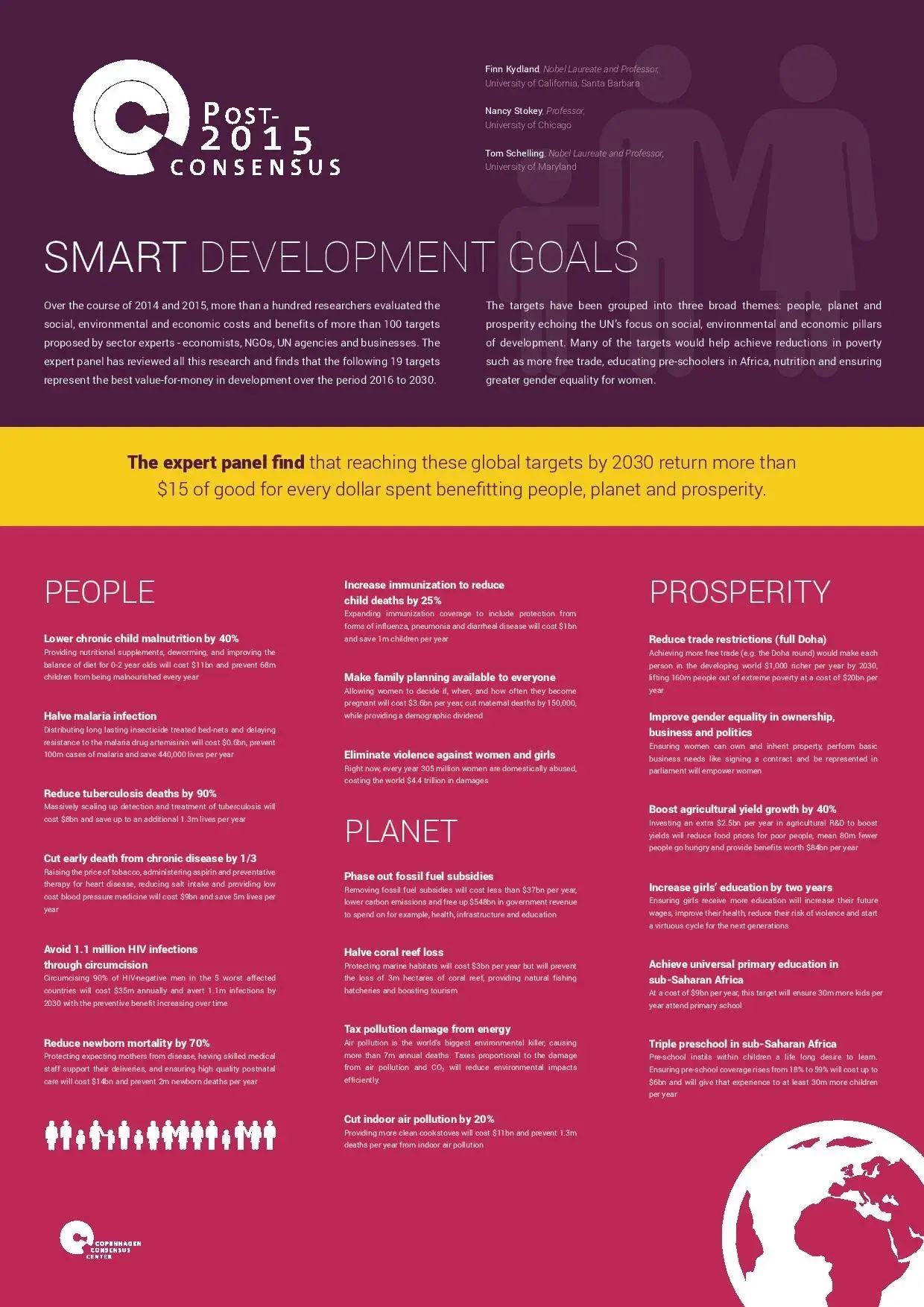Water and Sanitation? What's the smartest SDG target?

Those of us lucky enough to live in the industrialized world typically take for granted simple things like running water, flush toilets and going to the bathroom in privacy. Yet, 750 million people have no access to any type of basic source of drinking water, 2.5 billion – almost half the developing world – lack even a basic latrine and 1 billion have to resort to what is politely known as open defecation.
The good news is that we have been improving - over the past 25 years, more than 2 billion have gained access to better water and almost 2 billion to sanitation.
What about water and sanitation for everyone?
As reported by Reuters, this is a challenging but beneficial target with returns between $3 and $6 for every dollar spent.
By 2030, this will mean providing an extra 2.3 billion people with water, through installing more wells, boreholes and springs. It will also mean serving 3 billion people with basic sanitation; using a combination of low-cost solutions such as pour-flush, dry pit latrines and shared flush toilets in urban areas. On the way, simply avoiding open defecation with shared latrines is possibly the most effective best target.
None of this is cheap, with water and sanitation for everyone likely to cost $45 billion annually. But the result is per year, 170,000 fewer deaths from contaminated water, and 80,000 fewer deaths from improper sanitation – with children benefiting the most. Additionally, it would save people, mainly women, up to 40 min per day when collecting water and 15min per day when going to defecate. Avoiding open defecation is even cheaper at $13 billion annually.
For every dollar spent on providing basic drinking water and sanitation we would do $4 and $3 worth of good respectively. Eliminating open defecation in rural areas returns $6 for every dollar spent.
You can read all the papers on water and sanitation here and download the one page PDF here.
The smartest targets for the post-2015 development agenda
What are the smartest targets for the post-2015 development agenda?
In a world of limited resources, we can’t do everything, but how should we prioritize? The Copenhagen Consensus Center provides information on which targets will do the most social good relative to their costs. The final decision on choosing goals will definitely rest on a number of factors, not just economics – but knowing the costs and benefits provides an important piece of information.
The Post-2015 Consensus brought together, renowned experts from the UN, NGO and private sectors with 60 teams of economists to produced 100+ research papers to establish the most effective targets for the post-2015 development agenda within 22 core issue areas: Air Pollution, Biodiversity, Climate Change, Conflict & Violence, Data for Development, Education, Energy, Food Security, Gender Equality, Governance & Institutions, Health: Chronic Diseases, Health: Health Systems, Health: Infant Mortality & Maternal Health, Health: Infectious Diseases, Infrastructure, Illicit Financial Flows, Nutrition, Population & Demography, Poverty, Science & Technology, Trade, and Water & Sanitation.
An Expert Panel including two Nobel Laureates has reviewed all of this research and identified 19 targets that represent the best value-for-money in development over the period 2016 to 2030.
Only have three minutes? Watch our introduction video to the Post-2015 Consensus project.

Making prioritization a factor in the post-2015 debate
An overview of Copenhagen Consensus' ground-breaking research which is shaping the thinking for the 193 governments about to prioritize the smartest development goals for 2016-2030. If you've just read the article in The Economist you might be interested in exploring more about our project, and the research we've undertaken so we have put together an online supplement with more in-depth information.


